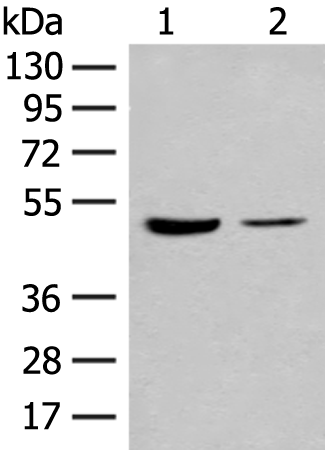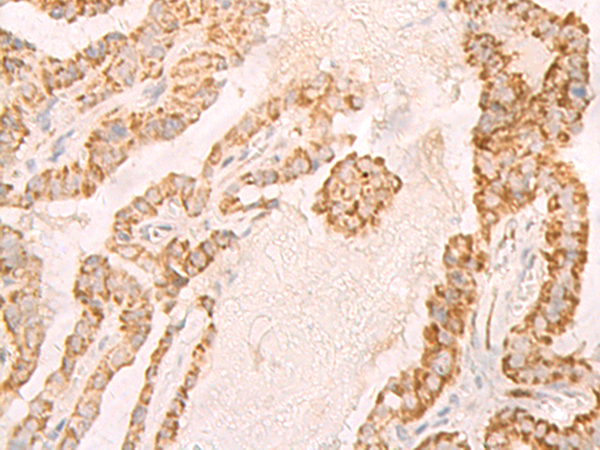

| WB | 咨询技术 | Human,Mouse,Rat |
| IF | 咨询技术 | Human,Mouse,Rat |
| IHC | 1/40-1/200 | Human,Mouse,Rat |
| ICC | 技术咨询 | Human,Mouse,Rat |
| FCM | 咨询技术 | Human,Mouse,Rat |
| Elisa | 1/5000-1/10000 | Human,Mouse,Rat |
| Aliases | ILRA; CD127; IL7RA; CDW127; IL-7R-alpha |
| WB Predicted band size | 52 kDa |
| Host/Isotype | Rabbit IgG |
| Antibody Type | Primary antibody |
| Storage | Store at 4°C short term. Aliquot and store at -20°C long term. Avoid freeze/thaw cycles. |
| Species Reactivity | Human |
| Immunogen | Synthetic peptide of human IL7R |
| Formulation | Purified antibody in PBS with 0.05% sodium azide and 50% glycerol. |
+ +
以下是关于IL7R抗体的3篇模拟参考文献示例(非真实文献,供格式参考):
1. **文献名称**:Targeting IL-7 Receptor α in T Cell Acute Lymphoblastic Leukemia
**作者**:Smith A, et al.
**摘要**:研究IL7R抗体在T细胞急性淋巴细胞白血病中的治疗潜力,证明其通过阻断IL-7信号通路抑制白血病细胞增殖并诱导凋亡。
2. **文献名称**:IL7Rα Antibody Attenuates Autoimmune Inflammation in Multiple Sclerosis Models
**作者**:Chen L, et al.
**摘要**:在小鼠多发性硬化模型中,抗IL7Rα抗体通过抑制Th17细胞分化和减少中枢神经系统炎性浸润,显著改善疾病症状。
3. **文献名称**:A Humanized Anti-IL7R Antibody Promotes Regulatory T Cell Expansion in Type 1 Diabetes
**作者**:Wang Y, et al.
**摘要**:开发一种人源化IL7R抗体,通过增强调节性T细胞(Treg)功能恢复免疫平衡,在1型糖尿病小鼠模型中延缓疾病进展。
---
**注意**:以上为模拟示例,真实文献需通过PubMed/Google Scholar检索关键词(如"IL7R antibody therapeutic")。如需具体文献,可提供更详细的研究方向(如癌症、自身免疫病等)。
The interleukin-7 receptor (IL7R), composed of the IL7Rα (CD127) and common γ-chain (γc), plays a critical role in lymphocyte development, homeostasis, and immune regulation. Dysregulation of IL7R signaling is implicated in autoimmune diseases (e.g., multiple sclerosis, rheumatoid arthritis), hematologic malignancies (e.g., acute lymphoblastic leukemia), and inflammatory disorders. IL7R-targeting antibodies have emerged as therapeutic tools to modulate this pathway.
Current research focuses on blocking IL7R to suppress pathogenic T-cell activity in autoimmunity or disrupt survival signals in cancer cells. For example, anti-IL7Rα antibodies have shown preclinical efficacy in reducing disease severity in experimental autoimmune encephalomyelitis (EAE), a model of multiple sclerosis. Conversely, in T-cell acute lymphoblastic leukemia (T-ALL), IL7R overexpression drives oncogenic signaling, making it a potential target for antibody-mediated inhibition.
Challenges include balancing therapeutic effects with potential immunosuppression risks, as IL7R is essential for normal immune function. Novel strategies like antagonistic antibodies, bispecific designs, or combination therapies aim to enhance specificity. Several candidates are in early-stage clinical trials, though none have yet reached approval. Understanding IL7R's dual roles in immunity and disease continues to guide antibody engineering for safer, more precise interventions.
×